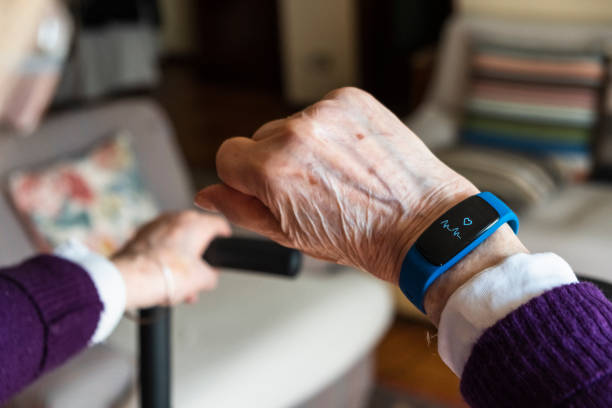Wearable Technology – A Transformative Tech to Aging in Place
As we age, our ability to stay outside of a facility-type setting, remain at home and age in place depends on many factors relating to personal health and safety. Especially after a fall or medical event, families become focused on more frequent monitoring of a vulnerable elder’s health and well-being. Like lightweight, digital cameras transformed home security, wearables may re-define personal safety.
As technology innovates, new wearable technology ups our chances of living at home longer
To learn where the market for these products is headed, review the report by Laurie M. Orlov, principal analyst at Aging and Health Technology Watch. Her research shows where the wearables market stands in her report (https://www.ageinplacetech.com/files/aip/Report%20Final%20June%201%202021.pdf) “The Future of Wearables and Older Adults 2021.”
This Is Not Your Father’s Fit Bit!
Now-familiar inventions such as smartwatches that track fitness, sleep, and other conditions made people more comfortable with wearables. The Consumer Technology Association reports that consumers are increasingly interested in tracking blood pressure, heart health, and blood sugar. Notably, two thirds (66%) of those who started using a wearable, did so to manage a diagnosed health condition. Further, over 51% of wearables owners reported they are using devices to address a diagnosed health condition, says Rock Health.
“Wearables can augment and potentially inform the annual checkup”
Wearables have the potential to monitor a slew of health conditions. Also evolving is the ways in which they share that data with family, caregivers and healthcare providers. With that said, doctors remain cautious and skeptical about such devices and resistant to integrating data from wearables directly into the health system. In her report, Orlov writes “Wearables can augment and potentially inform the annual checkup. For example, replacing a one-time blood pressure check, perhaps elevated by other factors such as medical environs, frequent checks at home provide a level of accuracy that may help avoid over-medicating. Instead of periodic finger sticks for blood sugar level, patches now indicate effects of certain foods and provide a timely warning.”
Ideas and questions from the report:
- Could wearables predict strokes based on a person’s motion changes before they occur?
- Tracking and notification technologies can not only alert caregivers of an emergency, but also ongoing health changes.
- Could a Parkinson’s patient receive notice of needing a new prescription based on detected gait changes?
Some challenges in advancing wearables include accuracy of measurements, as devices improve. Also significant, the healthcare industry embracing and integrating compliant data. Naturally, privacy concerns and personal willingness to wear devices will drive demand.
Encouragingly, new research, innovation, and funding in the wearables field continue. These devices could help many to live healthier, more secure lives. Naturally, this means staying longer in the comfort of their own home.
